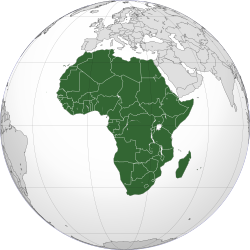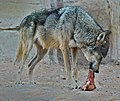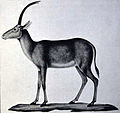

This list of African species extinct in the Holocene covers extinctions from the Holocene epoch, a geologic epoch that began about 11,650 years before present (about 9700 BCE) [a] and continues to the present. [1]
Contents
- Mammals (class Mammalia)
- Elephant-like mammals (order Proboscidea)
- Rodents (order Rodentia)
- Primates (order Primates)
- True insectivores (order Eulipotyphla)
- Carnivorans (order Carnivora)
- Odd-toed ungulates (order Perissodactyla)
- Even-toed ungulates (order Artiodactyla)
- Birds (class Aves)
- Landfowl (order Galliformes)
- Bustards (order Otidiformes)
- Shorebirds (order Charadriiformes)
- Hawks and relatives (order Accipitriformes)
- Perching birds (order Passeriformes)
- Reptiles (class Reptilia)
- Squamates (order Squamata)
- Amphibians (class Amphibia)
- Frogs (order Anura)
- Ray-finned fish (class Actinopterygii)
- Minnows and allies (order Cypriniformes)
- Salmon, trout and relatives (order Salmoniformes)
- Toothcarps (order Cyprinodontiformes)
- Insects (class Insecta)
- Butterflies and moths (order Lepidoptera)
- Bark lice, book lice, and parasitic lice (order Psocodea)
- Ostracods (class Ostracoda)
- Order Podocopida
- See also
- Notes
- References
- External links
Africa is highly biodiverse; it is the continent with the largest number of megafauna species, as it was least affected by the extinction of the Pleistocene megafauna. However, a few species have disappeared from Africa as part of the ongoing Holocene extinction, driven by human activity.
Madagascar and the Indian Ocean islands, Macaronesia, and Saint Helena, Ascension and Tristan da Cunha are biogeographically distinct from mainland Africa and have a much greater number of Holocene extinctions. Recently extinct species from these regions are listed in separate articles.
Many extinction dates are unknown due to a lack of relevant information.









































